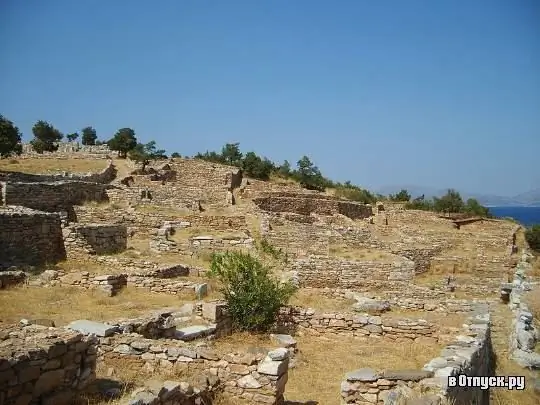
Description of the attraction
Ramnus is a remote northern dim (district) of Attica, located 39 km from Athens and 12, 4 km from Marathon, overlooking the Gulf of Euboea. During the Peloponnesian War, Ramnus was strategically important, so a well-fortified fortress was built on the hill, in which the Athenian garrison was located. On both sides of the hill were two harbors for ships that transported grain and other food to Athens.
This area has been known since ancient times thanks to the sanctuary of Nemesis, the winged goddess of retribution, located here. The temple was built around the 5th century BC. and is made in the Doric style. In the temple there was a statue of Nemesis, made of Parian marble, presumably the work of Phidias (according to another version, this is the work of Phidias' student Agorakritus). According to legend, the marble block from which the statue of the goddess was made was brought by the Persians specifically to sculpt a monument in honor of their victory, in which they were absolutely sure. As you know, the Persians were defeated in the Battle of Marathon, but the marble was used for its intended purpose, however, by the Greeks. In the 4th century A. D. the temple was destroyed by order of the Byzantine emperor Arcadius. Only the ruins of the temple of Nemesis have survived to this day. Fragments of the statue have also survived, some of them are in the National Archaeological Museum, and some in the British Museum.
The second temple, the ruins of which were discovered during excavations, was somewhat smaller and dedicated to the goddess of justice Themis (presumably the 6th century BC). Today, the National Archaeological Museum of Athens houses a marble statue of Themis (3rd century BC) found at Ramnus.
The first trial excavations of this area were carried out in 1813, but they were suspended and resumed only towards the end of the 19th century. Archaeologists have discovered here the remains of two temples, a fortress, the ruins of an ancient theater and a number of burials. From 1975 to the present day, constant work has been carried out here, so part of the area is not accessible for visiting.
Since the area is quite remote and archaeological excavations are still underway, there are few tourists here. Picturesque nature, beautiful views of the Gulf of Euboea, peace and quiet will allow you to have a great time and relax from the hustle and bustle of the big city.






